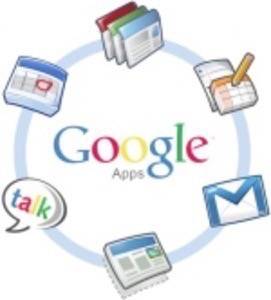When any enterprise organization makes the move the cloud, it’s a fairly elaborate process – the buy-in, the roll-out. “It’s not as simple as turning on an account,” says Jaime Casap. As Google Apps Education Manager, Casap would know. Google Apps for Education now boasts some 8 million users worldwide. And so while headlines may announce that states and school districts have turned on the account, so to speak, that news only tells a small part of the story.

The Benefits for Schools Go Beyond Just Budgets
When Oregon announced in April that it was opening Google Apps for Education to its public schools, the state estimated that the move would save its Department of Education about $1.5 million a year. For cash-strapped school systems, that sort of savings is hard to ignore. But talking to many education technology coordinators, the budget piece is only a small part of the appeal of the Google’s cloud-based applications.
Howard Chan, the Director of Technology for K-12 public charter schools in San Diego, California, has helped 8 schools migrate to Google Apps for Education, for example. He describes the savings from not having to administer email servers in terms of both time and money, and points to the new tools that his IT staff have been able to develop with Google Apps, including a Tech Support System using Google Voice and Google Docs.
Moving to the Cloud: Not Just a “Technology Buy-in” But a Cultural One
It’s the access to Google Apps that teachers, students, IT staff reference most frequently when talking about their move to the cloud. And they speak of it not just as a shift in technology (I’m not sure I ever heard a teacher say “SaaS”), but a shift in culture. In the words of Howard Chan, “having a centralized depository for disseminating information has changed the culture of our school. Now there is a platform for distributing information in real time and archiving information for future use.”
Giving teachers and students the opportunity to learn and work together collaboratively is one of the cornerstones of 21st century education. But while some schools have moved quickly to adopt Internet technologies, others have been far more cautious.
Paul Nelson, an education technology specialist for the Northwest Regional Educational Service District in Oregon, has overseen a number of schools in his district adopt Google Apps for Education. Several did so back in 2006 when the program was first offered, long before the state of Oregon adopted it. But Nelson notes that some of the smaller districts, particularly those without ed-tech specialists, have been fearful of security and publicity problems and reluctant to move their schools online. And Google Apps is helping them do so now in a “controlled way.”
How Will the Cloud Disrupt Education?
The buy-in – both technologically and culturally – and the training of teachers and staff takes ongoing training and support, say both Chan and Nelson. But they, along with staff at Google, point to the online professional learning networks that many educators participate in as being key to helping share ideas about how to best use these tools in their classroom.
And many of their ideas are incredibly innovative. Nelson points to a group of teachers in the Astoria School District who are using Google Sites to create an open-source algebra textbook, of sorts, using the Creative Commons’ licensed CK12 content as the foundation for course materials that can be easily replicated to any school using the Apps for Education. The ease with which resources can be shared – by teachers and by students, not just in one classroom or school building, but worldwide – has a huge impact on the types of teaching and learning that can happen.
But it takes time for any enterprise organization to adjust to new technologies, and schools are no different in that regard. (They are, however, different in many other aspects, including a litany of legal requirements around student data and access, as well as set of IT “customers” that include not just staff, but teachers, students, parents, and taxpayers.) Says Nelson, who like many Oregon educators is busily prepping for school to start this fall, “We’re still learning.”










